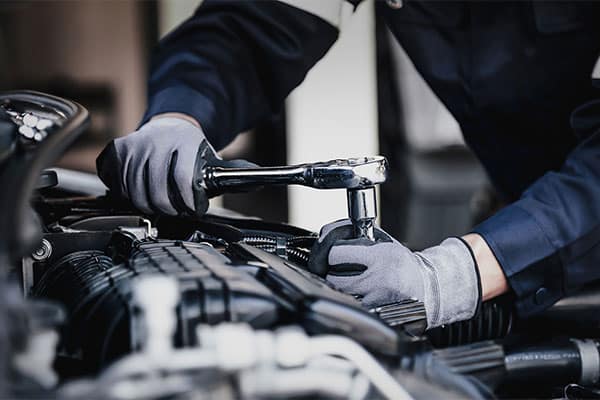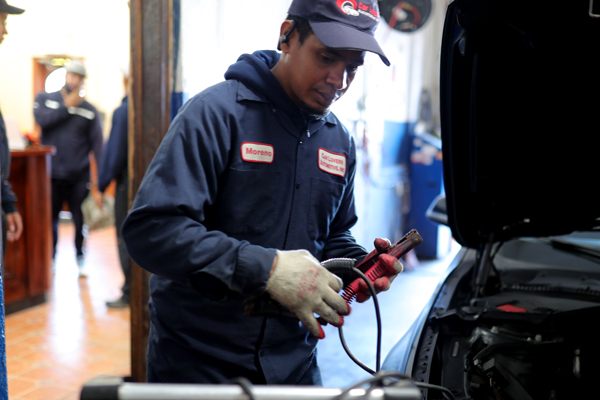All Categories
Featured
Your car's brakes are just one of the most vital elements in ensuring your safety and the security of others when traveling. Normal brake examinations are essential to maintaining ideal braking performance and avoiding expensive repair services. Whether you're a seasoned auto proprietor or a new motorist, understanding brake inspection standards can help you stay positive about maintenance and ensure your vehicle is constantly roadworthy.
- Why Brake Inspections Issue. The more you drive, the more rubbing your brake pads sustain, at some point leading to lowered braking efficiency. Without correct assessment, it's tough to assess when your brakes might be in demand of repair.
A well-kept brake system ensures fast, receptive stopping power, especially in emergencies. It additionally assists prolong the life of your vehicle, as ignoring brake upkeep can result in a lot more serious, expensive issues later.
- Indicators You Need a Brake Assessment. While it's critical to have your brakes checked periodically, specific indications may suggest that they require interest. Watch (and ear) out for these warning signals:
Squeaking or Grinding Sounds: Unusual noises, especially a piercing screech or grinding sound, often imply that your brake pads are used down. Vibration or Pulsation: If you feel vibrations or a pulsing experience when pressing the brake pedal, maybe a sign of warped rotors or unequal brake pad wear. Minimized Brake Responsiveness: If your brakes feel less responsive or you need to push the pedal harder to reduce down, it might show air in the brake lines or reduced brake liquid. Pulling to One Side: If your vehicle draws away when stopping, it might suggest unequal brake pad wear or a brake fluid leak. Control Panel Warning Lights: Some automobiles have brake-related warning lights that show problems like reduced brake liquid or used brake elements. If you observe any one of these signs, it's vital to have a specialist mechanic perform a brake inspection as soon as possible.

- What Occurs During a Brake Inspection? Throughout a brake inspection, a mechanic will certainly inspect numerous essential elements of the braking system to make sure every little thing is in working order. Below's what you can expect throughout the process:
Brake Pads and Shoes: The mechanic will certainly inspect the thickness of the brake pads or footwear. If they're as well thin, they'll need to be replaced. Brake Rotors: Rotors are the discs that the brake pads press versus to reduce your car down. They'll be inspected for any kind of indications of wear, racking up, or warping. Brake Fluid: Reduced or contaminated brake liquid can impair stopping performance. The service technician will certainly examine the fluid degree and quality and leading it up or flush it if essential. Brake Lines and Pipes: Brake lines lug liquid from the master cyndrical tube to the brakes. The mechanic will certainly examine for any kind of leakages, fractures, or damage to make certain appropriate fluid circulation. Brake Calipers and Wheel Cyndrical Tubes: Calipers and wheel cylinders push the brake pads against the rotors or drums. The technician will look for wear, leakages, and appropriate operation. 4. Exactly how Usually Should You Have Your Brakes Examined? The frequency of brake inspections relies on aspects like your driving practices, the kind of automobile you drive, and the setting in which you drive. As a general guideline, it's an excellent concept to have your brakes examined every 12,000 miles or as soon as a year. If you experience any of the warning indicators pointed out previously, it's important to obtain your brakes examined quickly.
For those who frequently drive in hefty web traffic, hilly surface, or rough weather, even more regular assessments may be needed.
- Importance of Timely Brake Fixes. When you spot a trouble with your brakes, it's important to resolve it right away. Delaying brake fixings can result in more significant damage to your stopping system, leading to greater repair expenses. In extreme situations, disregarding brake issues can cause finish brake failure, which is a severe safety threat.
By remaining on top of brake upkeep and resolving issues promptly, you guarantee that your brakes remain to perform as intended, maintaining you and your travelers safe when traveling.
Conclusion: Maintain Your Brakes in Top Shape. Brake examinations are a basic yet important component of automobile upkeep. By understanding the value of normal examinations, recognizing the indicators of brake concerns, and staying proactive with repairs, you can ensure your vehicle's braking system stays in ideal condition.
Latest Posts
Specialist Commercial Roofing Solutions in North Platte, Nebraska
Find Affordable Auto Repairs with Montclare’s Limited-Time Service Specials
Boost Your Home's Exterior with Weathercraft's Home siding Solutions
More
Latest Posts
Specialist Commercial Roofing Solutions in North Platte, Nebraska
Find Affordable Auto Repairs with Montclare’s Limited-Time Service Specials
Boost Your Home's Exterior with Weathercraft's Home siding Solutions
